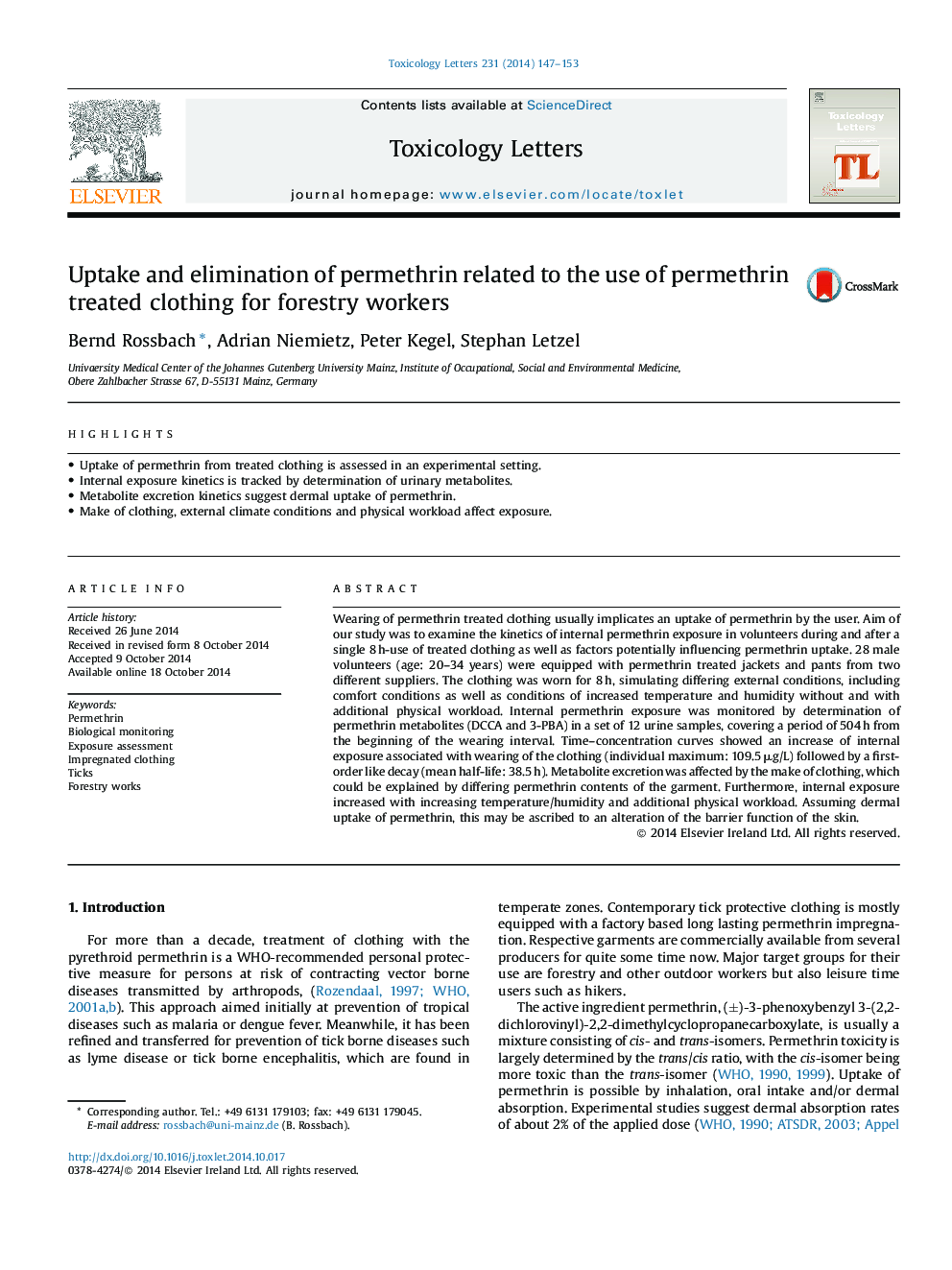| Article ID | Journal | Published Year | Pages | File Type |
|---|---|---|---|---|
| 5860098 | Toxicology Letters | 2014 | 7 Pages |
Abstract
Wearing of permethrin treated clothing usually implicates an uptake of permethrin by the user. Aim of our study was to examine the kinetics of internal permethrin exposure in volunteers during and after a single 8 h-use of treated clothing as well as factors potentially influencing permethrin uptake. 28 male volunteers (age: 20-34 years) were equipped with permethrin treated jackets and pants from two different suppliers. The clothing was worn for 8 h, simulating differing external conditions, including comfort conditions as well as conditions of increased temperature and humidity without and with additional physical workload. Internal permethrin exposure was monitored by determination of permethrin metabolites (DCCA and 3-PBA) in a set of 12 urine samples, covering a period of 504 h from the beginning of the wearing interval. Time-concentration curves showed an increase of internal exposure associated with wearing of the clothing (individual maximum: 109.5 μg/L) followed by a first-order like decay (mean half-life: 38.5 h). Metabolite excretion was affected by the make of clothing, which could be explained by differing permethrin contents of the garment. Furthermore, internal exposure increased with increasing temperature/humidity and additional physical workload. Assuming dermal uptake of permethrin, this may be ascribed to an alteration of the barrier function of the skin.
Related Topics
Life Sciences
Environmental Science
Health, Toxicology and Mutagenesis
Authors
Bernd Rossbach, Adrian Niemietz, Peter Kegel, Stephan Letzel,
